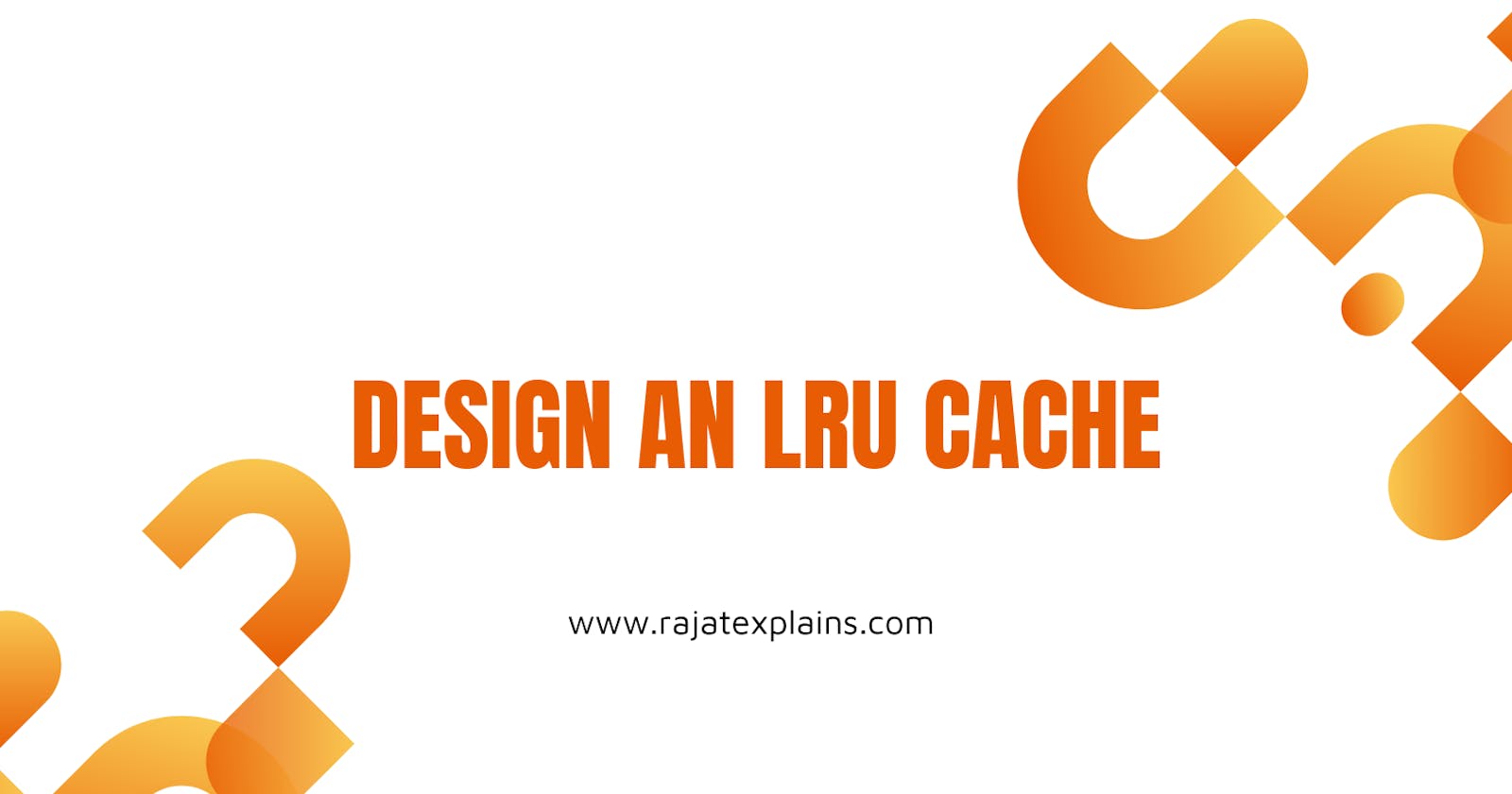What is an LRU Cache
Let’s first quickly go over what is cache. Computers have cache memory that temporarily stores the most frequently used data. It’s a great way to get the data that is used most often because the retrieval process is super fast. However, cache memory is limited in size and there needs to be a way to manage what data needs to be removed from the cache in order to store new data. That’s where LRU cache comes in.
LRU (Least Recently Used) is a cache replacement algorithm that removes the least recently used data in order to make room for new data. When I say "least recently used" data, I mean that of all the data we have in cache, this one has not been used or interacted with for the longest amount of time.
Chrome uses LRU algorithm to evict (remove) data, when it has to. Watch this video to get a better understanding around this (6:25 to 7:38)
Question❓
Implement a class LRUStorage.
- This is of course not to reflect the true implementation in Chrome.
getDataandsetDatashould both be treated as data being 'used'.- Considering time precision issue, your class needs to accept
getTimestampas second argument of constructor function. This method will be called to get the latest time.
// type of a data instance stored cache
interface Data {
key: string
lastUsed: number
size: number
persistent: boolean
}
interface LRUStorage {
// maximum data cache can store
capacity: number
// to use the data for key
// return size of the data or undefined if not exist
getData(key: string): Data | undefined
// updating data for key
// return boolean to indicate success or failure
// If the total size exceeds capacity,
// Least Recently Used non-persistent data other than itself should be evicted.
setData(key: string, size: number): boolean
// manually clear data for key
clearData(key: string): void
// change data for key to be persistent
// it only handles existing data not the data added later
// persistent data cannot be evicted unless manually clear it
makePersistent(key: string): void
}
Motive of the question 🤔
With this question, the interviewer mainly wants to test you on:
- How well do you understand class paradigm in JS
- Your architecture design skills
- How well do you think of the edge cases and efficiently figure out a solution
Solution 👨💻
Let us create every function one by one. One step at a time.
Step I
Let us first create the constructor for our LRUStorage class.
class LRUStorage {
/**
* @param {number} capacity
* @param {() => number} getTimestamp
*/
constructor(capacity, getTimestamp) {
this.capacity = capacity
this.getTimestamp = getTimestamp
this.cache = {}
this.currentCapacity = this.capacity
}
}
We added a cache object, which will be our LRU cache, holding our data in form of key value pairs. We also need another variable to store the amount of memory currently used up, so that we can later evict our cache based on this.
Step II
Let us now implement the getData method
getData(key) {
if (key in this.cache) {
// don't forget to update the lastUsed value for this key
this.cache[key].lastUsed = this.getTimestamp();
return this.cache[key];
}
}
Step III
Now, let us implement the second method setData. Following are the caveats associated with the method:
- update data for the key
- return boolean to indicate success or failure
- If the total size including the new data exceeds capacity, Least Recently Used non-persistent key data other than itself should be evicted.
Before we write the setData method, let us write the evictData method
evictData() {
const nonPersistentCacheKeys = Object.keys(this.cache).filter((item) => {
return !this.cache[item].persistent;
});
const keyToRemove = cacheKeys.sort(
(x, y) => this.cache[x].lastUsed - this.cache[y].lastUsed
)[0];
if (!keyToRemove) return false;
this.currentCapacity += this.cache[keyToRemove].size;
delete this.cache[keyToRemove];
return true;
}
Now, let us write the setData method
setData(key, size) {
if (size > this.capacity) return false;
if (key in this.cache && size <= this.cache[key].size) {
this.currentCapacity =
this.currentCapacity - this.cache[key].size + size;
this.cache[key] = {
lastUsed: this.getTimestamp(),
size,
persistent: false,
};
} else {
while (this.currentCapacity < size) {
const didEvict = this.evictData();
if (!didEvict) return false; // not possible to remove any cache element
}
this.cache[key] = {
lastUsed: this.getTimestamp(),
size,
persistent: false,
};
this.currentCapacity -= size;
}
return true;
}
Step IV
Now, we have two methods left to implement, clearCache and makePersistent. These two are fairly straight forward
clearData(key) {
const spaceToRelease = this.cache[key].size;
delete this.cache[key];
this.currentCapacity += spaceToRelease;
}
makePersistent(key) {
this.cache[key].persistent = true;
}
If you have any other solution or any issue in understanding this solution, do drop a comment 😊
Want to learn more through interview questions, checkout my frontend interview series.
If you liked what you read 🧑🏫 and got to learn new things, do hit like 👍 and subscribe 🔖 to my newsletter to get instantly notified whenever I drop in new content.
And don't forget to follow 🚀 me on
Hashnode - Rajat Jain
Twitter - @rajatexplains
Instagram - @javascript_to_the_rescue
LinkedIn - Rajat Jain

